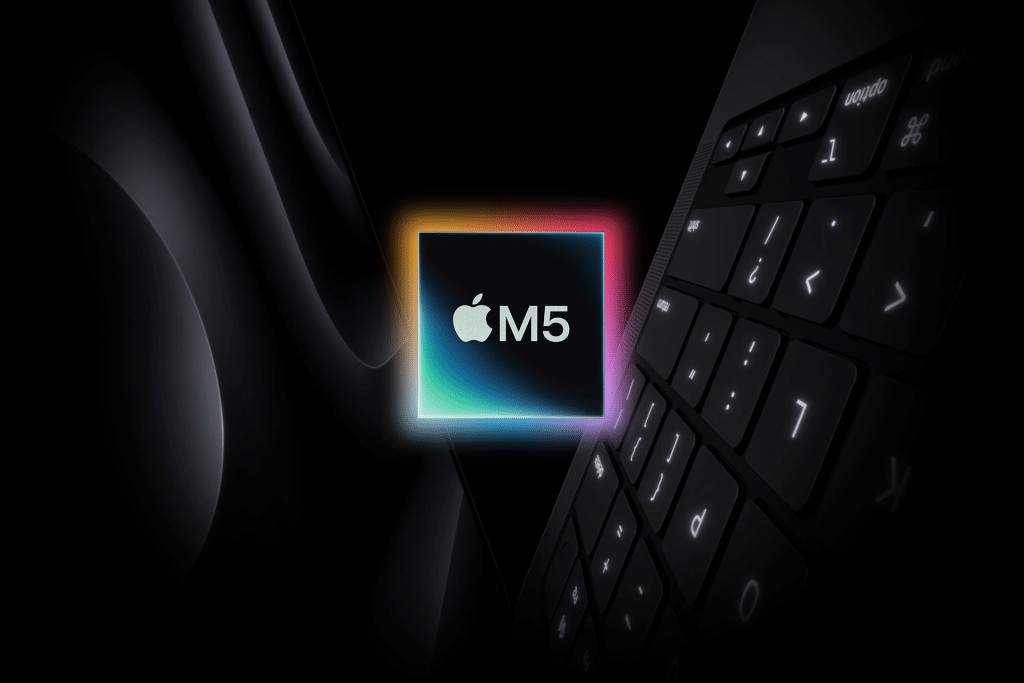Early benchmark data suggests Apple’s new M5 chip delivers performance comparable to the M1 Ultra — a processor that once powered Apple’s highest-end desktop systems. The results point to a striking generational leap in efficiency and processing capability, further narrowing the gap between Apple’s portable and professional computing lines.
According to tests compiled by Geekbench and shared by multiple independent reviewers, the M5 demonstrates up to a 2.7× performance improvement over the M3 chip and matches or slightly exceeds M1 Ultra scores in several CPU-intensive tasks. The results highlight how Apple’s architecture refinements, focused on efficiency cores and enhanced AI acceleration, are reshaping expectations for its midrange devices.
Performance Parallels With the M1 Ultra
While the M1 Ultra remains a dual-die chip designed for the Mac Studio and Mac Pro, the M5’s single-chip configuration achieves similar multi-core results while consuming significantly less power. Benchmark data shows the M5 scoring just below 23,000 in multi-core tests — nearly identical to Apple’s former desktop flagship.
Analysts note that these numbers confirm Apple’s trajectory toward desktop-class power in compact systems. The M5’s balance between performance and energy draw positions it as one of the most efficient chips in the company’s history, offering substantial gains in thermal control and sustained workloads without external cooling.
In addition to CPU advancements, the M5’s GPU shows notable improvement, with frame rendering and graphics throughput approaching those of discrete desktop-class GPUs. This shift opens broader potential for pro-level tasks on portable devices, including real-time rendering, machine learning training, and advanced simulation workloads.
Efficiency and AI Processing Gains
Apple’s focus with the M5 extends beyond raw performance. The chip features a redesigned Neural Engine that doubles AI inference throughput compared to the M3 generation, supporting the first full integration of Apple Intelligence across iPad Pro, Vision Pro, and MacBook Pro models.
This neural performance upgrade allows on-device generative AI tools to operate with higher speed and lower latency, reducing reliance on cloud computation. In practice, that means smoother text generation, real-time image editing, and context-sensitive automation that previously required more powerful desktop hardware.
Thermal testing also indicates that the M5 maintains peak frequencies longer without throttling, particularly in the new MacBook Pro chassis. Reviewers describe this balance as a significant step forward for sustained creative workloads and extended battery life in mobile configurations.
Architectural Refinement and Market Implications
The M5’s architecture builds on Apple’s 3-nanometer process, featuring faster memory bandwidth and an upgraded unified cache that accelerates data access for both CPU and GPU tasks. Developers testing the chip report improved multitasking responsiveness and reduced system lag under heavy processing loads.
What’s particularly notable, analysts say, is how Apple’s silicon roadmap continues to align high-end desktop performance with portable form factors. Devices powered by the M5 are now capable of workloads that once demanded top-tier configurations, narrowing the practical distinction between consumer and professional hardware.
These results may also set the tone for Apple’s upcoming M5 Ultra and M5 Max chips, which are expected to scale performance even further for desktop-class systems. If the baseline M5 already matches M1 Ultra output, higher-end variants could easily surpass the performance of Apple’s entire M1 generation by a wide margin.
A New Baseline for Apple Silicon
The early data signals that Apple’s silicon engineering is reaching a point of architectural maturity — where each new generation focuses as much on sustained, efficient performance as on raw speed. With the M5’s blend of power and thermal discipline, Apple has effectively delivered a mobile processor that can compete with past desktop standards while remaining cooler, quieter, and more energy-efficient.
As these chips roll out across the iPad Pro, Vision Pro, and new MacBook Pro models, the M5’s balance of desktop-class performance and mobile optimization could redefine the expectations for professional computing in the years ahead.
